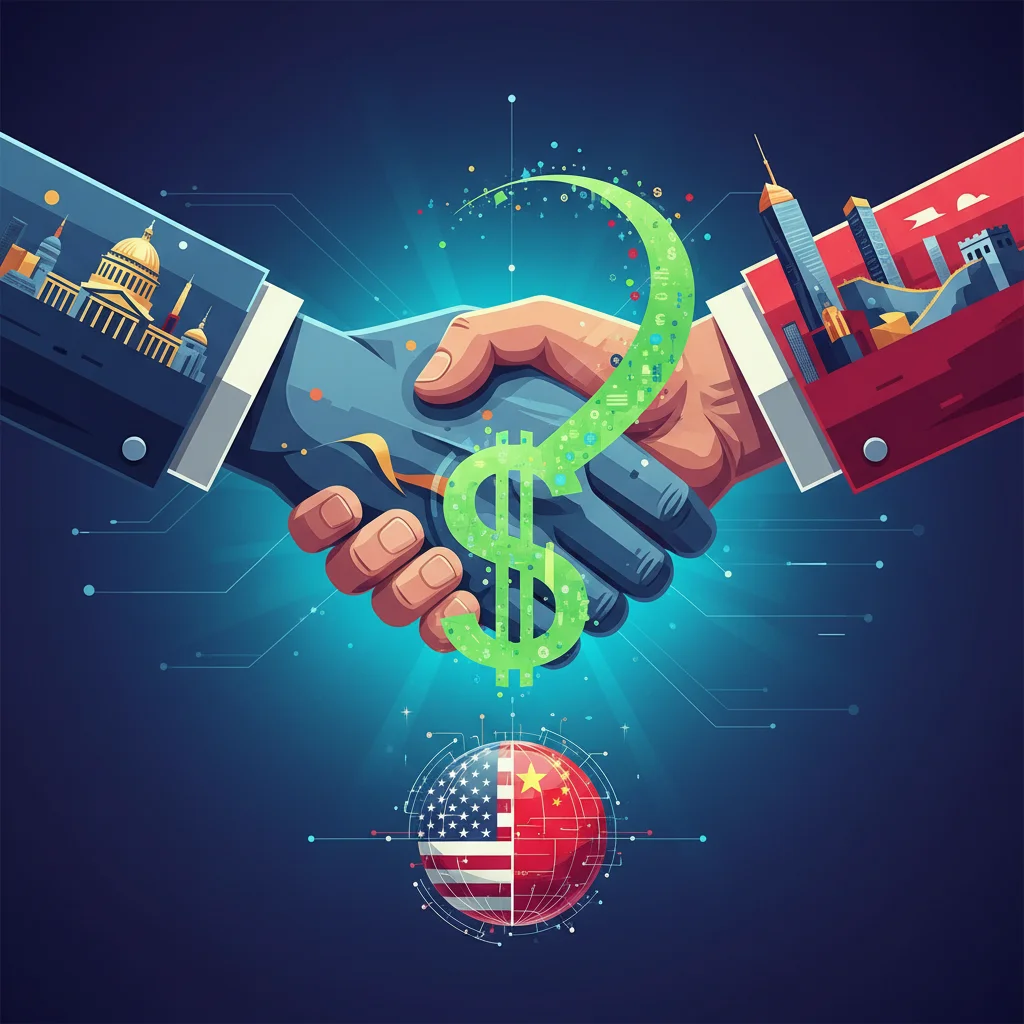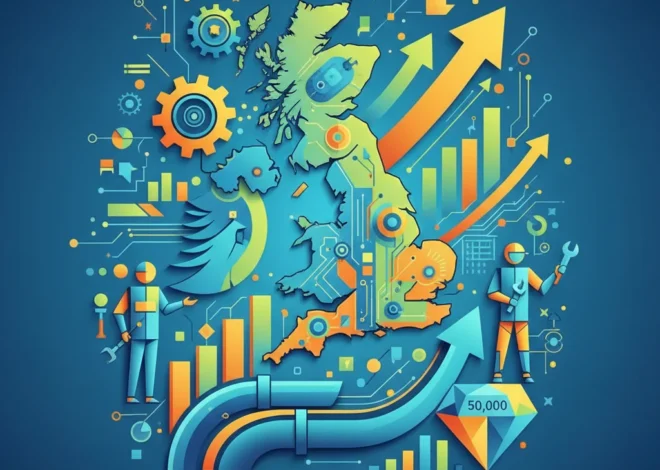
The Trillion-Dollar Handshake: Unpacking the Global Economic Stakes of the Trump-Xi Summit
In the high-stakes theater of global politics, few events command the world’s attention like a face-to-face meeting between the leaders of the United States and China. The recent White House announcement that President Trump will meet with President Xi Jinping in South Korea—their first in-person dialogue since Trump’s return to office—is more than just a political headline. It’s a seismic event poised to send shockwaves through the global economy, redraw the maps of international investing, and define the future of the stock market for years to come.
For investors, finance professionals, and business leaders, this summit is not a spectator sport. It is a critical inflection point. The conversations held behind closed doors will directly influence everything from supply chain logistics to the very architecture of global finance. As we stand on the precipice of this pivotal meeting, a deep dive into the context, stakes, and potential outcomes is not just prudent—it’s essential for strategic survival and success.
A Look in the Rearview Mirror: The Economic Legacy of the First Trump-China Encounter
To understand the future, we must first examine the past. The economic relationship between the U.S. and China during President Trump’s first term was defined by one word: disruption. The era of the trade war, initiated in 2018, saw the two economic superpowers engage in a tit-for-tat tariff battle that rattled global markets. The Trump administration imposed tariffs on hundreds of billions of dollars worth of Chinese goods, and Beijing swiftly retaliated. The stated goal was to address long-standing grievances, including intellectual property theft and a massive trade deficit, but the fallout was complex and far-reaching.
The conflict created immense uncertainty, forcing businesses to re-evaluate their supply chains and investment strategies. A 2019 study from the U.S.-China Business Council revealed that the trade war led to an estimated peak loss of 245,000 U.S. jobs (source). This period demonstrated how quickly geopolitical tensions can translate into tangible economic consequences, impacting corporate earnings, consumer prices, and overall market sentiment.
The “Phase One” trade deal, signed in January 2020, was intended as a truce. It included commitments from China to purchase more American goods and services and strengthen IP protections. However, its implementation was hampered by the COVID-19 pandemic and underlying strategic disagreements that were never fully resolved. Now, as the two leaders prepare to meet again, the unresolved issues of the past will undoubtedly form the foundation of their new negotiations.
Fueling the Engine: Why a Strong Economy is Britain's Only Answer to the Worklessness Crisis
The High-Stakes Agenda: What’s on the Table This Time?
This summit is not merely a sequel to the trade war; it’s a new chapter in an evolving economic saga. The global landscape has shifted dramatically, with advancements in financial technology, a renewed focus on national security, and a global economy still recovering from recent shocks. The agenda will be packed with issues that carry trillion-dollar implications.
1. Tariffs and Trade 2.0
The central question on every investor’s mind is whether we are heading for a new era of cooperation or a renewed trade conflict. Will existing tariffs be rolled back as a gesture of goodwill, or will new, more targeted restrictions be put in place? The focus may shift from broad-based tariffs to strategic sectors, particularly those related to technology and green energy. The outcome will have a direct impact on the profitability of multinational corporations and the stability of the global trading system.
2. The Technology Cold War: AI, Semiconductors, and Fintech
The battle for technological supremacy has become the central arena of U.S.-China competition. Issues like semiconductor export controls, 5G infrastructure, and the development of Artificial Intelligence are no longer just tech issues; they are national security and economic imperatives. This has profound implications for the fintech sector, which relies on cutting-edge hardware and software. A further decoupling of the two tech ecosystems could create fragmented markets, stifle innovation, and force companies and countries to choose sides. This could also accelerate the development of alternative payment and data-sharing systems, potentially leveraging blockchain technology to bypass traditional, Western-dominated financial channels.
3. The Future of Global Finance: Currency, Debt, and Banking
Beneath the surface of trade and tech lies a deeper struggle over the future of the global financial system. China has been steadily working to increase the international use of the yuan and has developed its own digital currency, the e-CNY. According to the Atlantic Council’s CBDC tracker, over 130 countries, representing 98 percent of global GDP, are now exploring a central bank digital currency (source). Any discussion at the summit that touches on currency, sanctions, or the role of the U.S. dollar could have massive repercussions for the banking industry and international capital flows. The U.S. holding of Chinese debt will also be a sensitive, high-leverage topic.
Sector-by-Sector: Mapping the Potential Market Impact
The outcome of the Trump-Xi meeting will not be felt uniformly across the market. Certain sectors are on the front lines and will experience the most immediate and dramatic effects. Astute investors should be watching these areas closely.
Below is a breakdown of key sectors and the potential impacts under two primary scenarios: a cooperative agreement versus a renewed confrontation.
| Sector | Potential Impact of a Cooperative Agreement (De-escalation) | Potential Impact of a Renewed Confrontation (Escalation) |
|---|---|---|
| Technology (Semiconductors, AI) | Rally in semiconductor stocks (e.g., NVIDIA, Intel) as fears of supply chain disruption and export bans ease. Increased cross-border R&D collaboration. | Sharp sell-off in chip stocks. Companies forced to invest heavily in bifurcated supply chains, hurting margins. Heightened risk of cyber-attacks. |
| Financials (Banking, Fintech) | Increased stability in global payment systems. Potential for greater U.S. financial institution access to the Chinese market. Boost for global fintech platforms. | Risk of financial sanctions, disruption to SWIFT access, and accelerated de-dollarization efforts. Uncertainty would hurt global banking stocks. |
| Industrials & Manufacturing | Lower input costs due to tariff reduction. More predictable supply chains lead to improved earnings forecasts for companies like Boeing and Caterpillar. | Higher material costs and logistical nightmares. Companies accelerate “friend-shoring,” which is costly and time-consuming, impacting short-term profitability. |
| Agriculture | Significant boost as China resumes or increases purchases of U.S. soybeans, pork, and other agricultural products, as per a potential new agreement. | Retaliatory tariffs from China would devastate U.S. farm incomes, similar to the first trade war, which saw U.S. agricultural exports to China plummet by over 50% (source). |
The Stealth Tax Squeeze: Why the UK's Shrinking CGT Threshold is a Bigger Deal Than You Think
The Investor’s Playbook: Strategies for Navigating Geopolitical Risk
For those managing capital, “wait and see” is not a strategy. The period surrounding the summit demands proactive risk management and a clear-eyed approach to portfolio construction. While no one can predict the exact outcome, several principles of sound investing can help navigate the turbulence.
- Geographic Diversification: The most obvious takeaway is to avoid over-concentration in any single market. Portfolios with a heavy tilt towards U.S. or Chinese equities are highly exposed. Investors should ensure they have exposure to other regions like Europe, Japan, and emerging markets like India and Brazil, which could potentially benefit from trade diversions.
- Focus on Resilient Sectors: Some sectors are less sensitive to geopolitical winds. Healthcare, consumer staples, and certain utilities tend to have more stable demand regardless of the macroeconomic climate. In the tech space, companies focused on cybersecurity may see increased demand amidst heightened international tensions.
- Monitor Currency Markets: The USD/CNY exchange rate is a key barometer of U.S.-China relations. A weakening yuan can be a sign of escalating tensions, as it can be used as a policy tool by Beijing to offset U.S. tariffs. Watching currency volatility can provide an early warning signal for equity markets.
- Scenario Analysis: Rather than making a single bet, sophisticated investors should model their portfolio’s performance under different scenarios. What happens in a full-blown trade war? What happens in a new detente? Understanding these potential outcomes allows for strategic hedging, perhaps through options or other derivatives, to protect against downside risk.
The Legal Slingshot: How Class Actions Empower SMEs Against Corporate Goliaths
Conclusion: Beyond the Handshake
The announced meeting between President Trump and President Xi is a landmark event that will set the tone for the global economy. It is a convergence of complex economics, powerful personalities, and competing national interests. The discussions on trade, technology, and finance will create clear winners and losers across the global stock market.
For business leaders, this is a moment to stress-test supply chains and reassess geopolitical risk. For investors and finance professionals, it is a call for vigilance, strategic positioning, and a deep understanding of how political headlines translate into market realities. The handshake in South Korea will last only a moment, but its economic consequences will reverberate for years to come.


